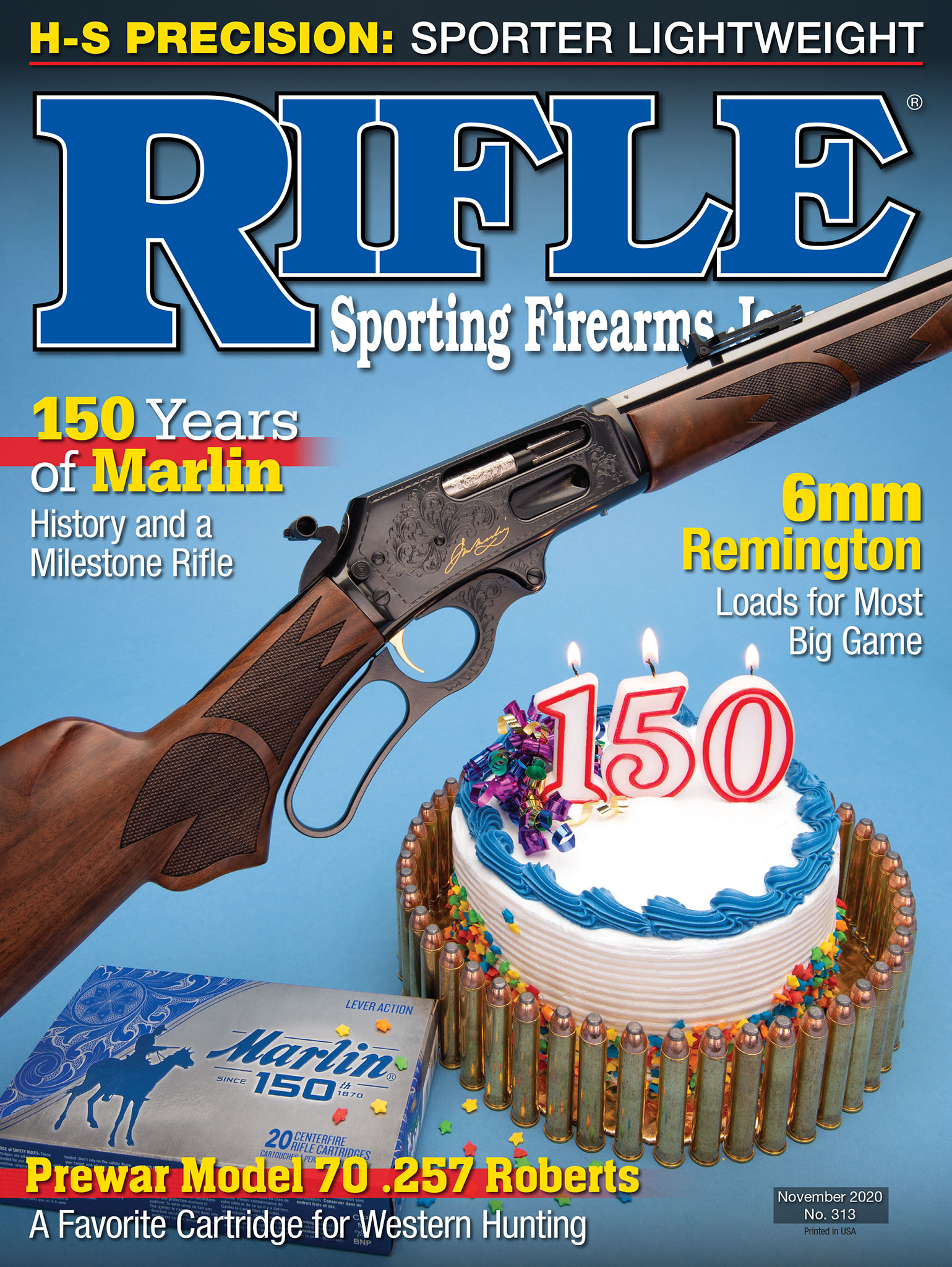Spotting Scope
Camouflage . . . Does It?
column By: Dave Scovill | November, 20
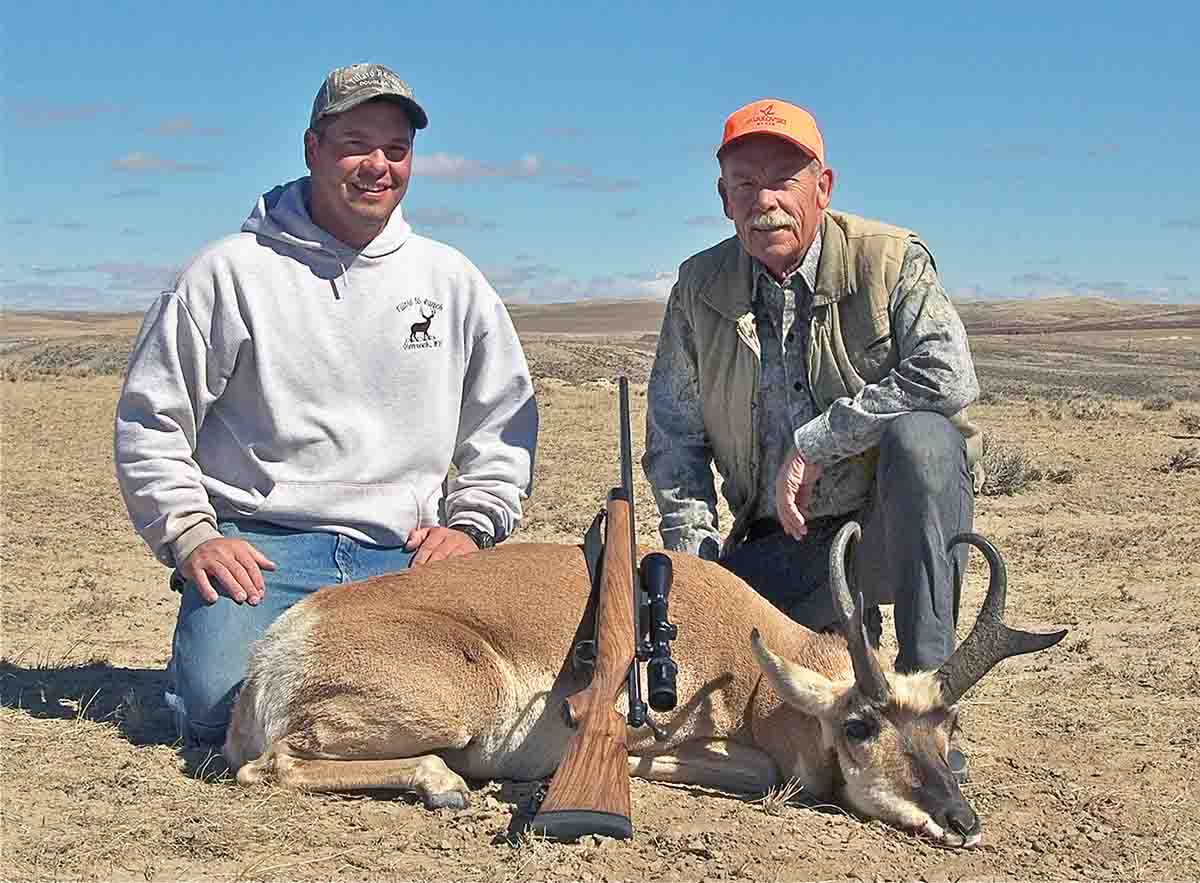
It didn’t seem to matter what color my clothes might be, as long as I managed to be still, although I asked Mom to tie-dye a sweatshirt, something like black-and-white photos I’d seen of Fred Bear wearing with a dark and light random pattern that resembled nothing in nature I knew of.
Howard Hill, a famous bow hunter during the 1950s, put on a show with slides and movies in the basement of Mom’s church, and he wore light brown shirts and pants on most of his hunts. He also used white and yellow fletching on his arrows that were easy to follow in flight for movies, as when he split the shaft of another arrow in the Errol Flynn Adventures of Robin Hood movie.
One evening in my blind, a fair-sized 4x4 blacktail buck moved to within a few yards and vanished as darkness advanced. Had hunting season been open, it would have been quite a trophy for a 12-year-old with a bow. It is, of course, one thing to find game but clearly another to bring it to bag.
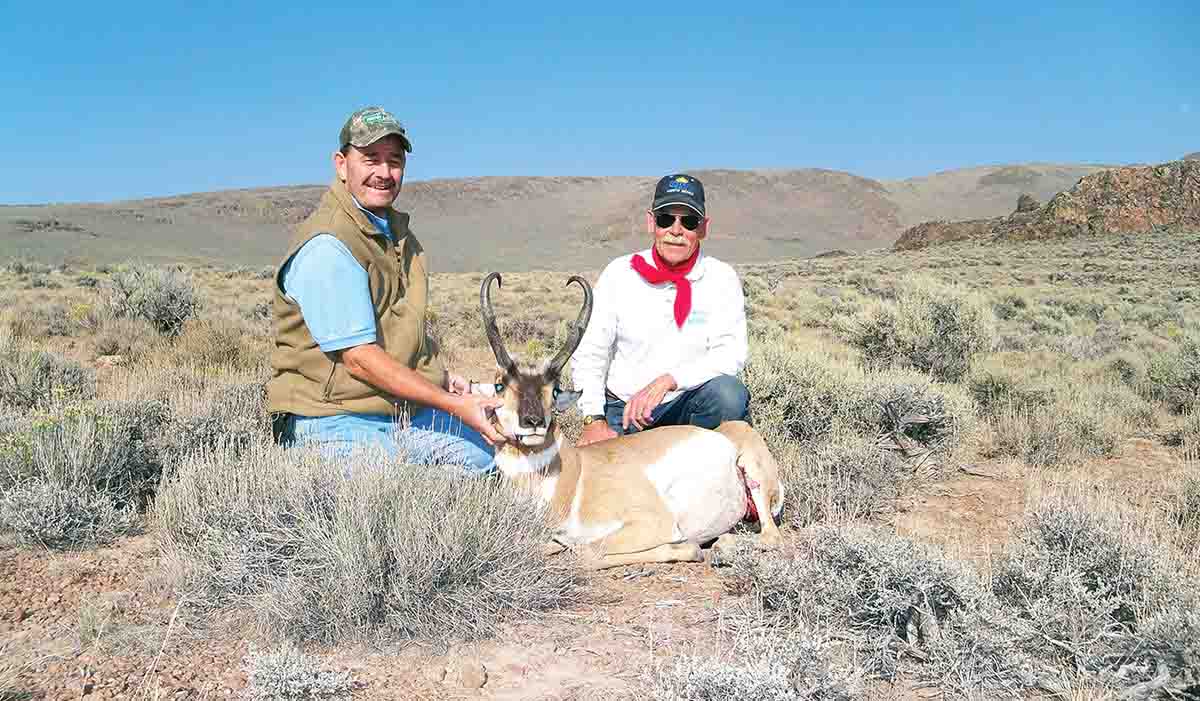
From the time I started hunting in the 1950s until that ram nearly walked over my hide on Poker Jim Ridge and through the 1980s, there were no commercial camouflage outfits that offered a pattern that might be compatible with the high-desert mountains. The local Army/Navy store was about the only outlet for surplus military-type clothing, which was for the most part drab brown and/or green. As the general rifle hunting season approached, the local department stores and sporting goods/hardware stores stocked red jackets or Filson-type checkered red-and-black wool coats and red hats.
The draw to commercial camouflage clothing began to appear in the 1980s for bow hunters, but the patterns didn’t match anything I’d seen in western Oregon. It was fairly obvious that bigwigs running those camouflage outfits were under the impression that the entire country was covered with hardwood forests like those found east of the Mississippi.
As a traditional bow hunter with the need to approach as close as possible for a shot, the real failure of modern camouflage was that none of the big outfits offered anything found in the Great Basin, that expanse of high desert and mountain ranges in eastern Oregon, western Idaho, Utah and Nevada – and as I was to find later, northern Arizona, New Mexico and Sonora, Mexico. That’s an awful lot of big-game territory for the bigwig camo boys back East to ignore.
Big leafy patterns didn’t help much for handgun hunting either, but when hunting with a rifle, camouflage as we know it today was pretty much a nonissue. That is, sitting in the shadows wearing a drab green or light brown shirt and/or work jacket made it possible to set up some distance from wildlife grazing areas or frequent crossings and glass for animals that had no idea anyone was within miles. With the current emphasis on long-range sniping, vice hunting, what does anyone need with camouflage?
By the mid-1990s, I wondered if any of those stealthy sportsmen I saw moving through the high mountain forests and open meadows were aware they looked more like Sasquatch than the invisible stalkers they might have imagined. Camouflage works up to a point if the hunter remains still, but a gray, green or brown shirt works just as well. Various light conditions help to cast patterns with shadows on bland material.
To deal with the oversight of the big camouflage outfits, I settled on a khaki shirt, tan or dark trousers and the pièce de résistance – an old, faded, light-green insulated vest. A light-brown, weathered Stetson repels the rain and keeps my head warm. In really cold weather, an insulated red shirt from Hutterite friends in northern Montana is perfect. In Sonora, a buckskin colored L.L. Bean blanket coat protects against the predawn December and January cold. A blaze orange vest and cover for the Stetson meets legal requirements where required.
After several African safaris and big-game hunts in Europe, it was apparent that for the most part only poachers and military wear camouflage in Africa. Loden green readily identifies, with a nod of recognition from local folks on the street or local pub, a hunter in Europe, along with the alpine hat in the Alps. The latter is more a matter of tradition and respect for a hunter’s hosts.
About 20 years ago, a friend and I left early one morning to call predators. It was dark, and the dome light came on when he opened the RV door. He was wearing a green shirt with a pattern that at first glance appeared to resemble sagebrush. When asked, he said it came from an outfit in Nevada, Faded Sage. I didn’t think much more about it until we quit our first setup. In the gray early morning light he was nearly invisible crawling out from under a juniper tree.
I’ve been wearing Faded Sage, where appropriate, ever since. It is the camouflage garment of choice that works almost anywhere in the Great Basin, northern Arizona, New Mexico and Mexico, assuming you don’t do
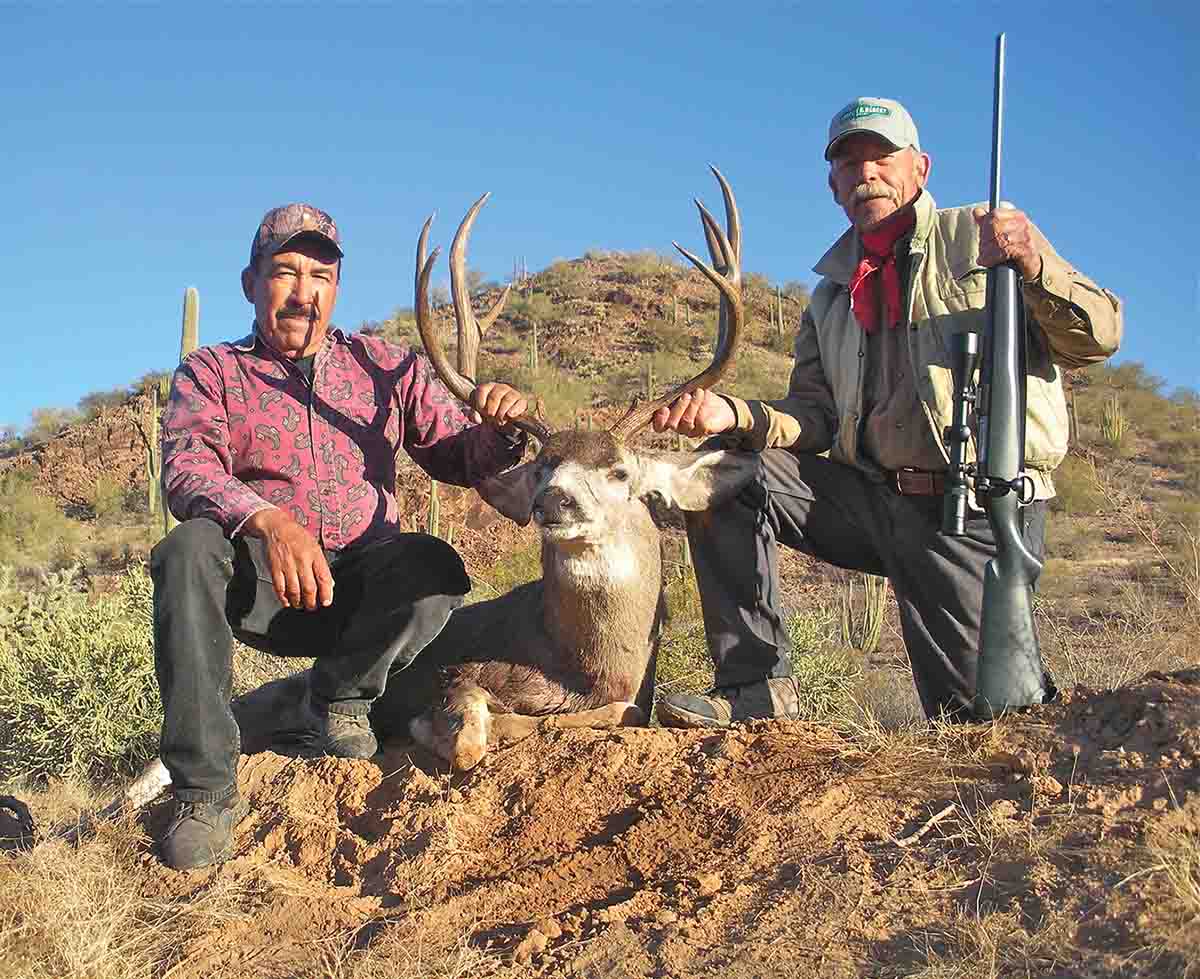
Experts tell us deer see longer and middle wave lengths like orange, green, yellow, brown and red as shades of gray or yellow. Regardless of that gobbledygook, hunting around the world in a variety of environments suggests that it makes sense to wear earth tones, greens and light browns. They don’t need to be arranged in leaf or bark patterns, because they won’t match the patterns where you are hunting anyway. Use the local flora as cover, like lying down in the sage and scrub brush out on the prairie or hiding in a clump of green brush in the forest or building a temporary blind.
To test Faded Sage in the desert outside Socorro, New Mexico, a few years back I crawled out on a ridge overlooking a valley below. There were several antelope within 200 to 300 yards, so I decided to stay there, lying flat on the ground with one glove covering most of my face, and see what happened. Eventually six antelope, does and young bucks, worked up the slope and walked within a few feet as they continued to feed. During a hunt in Montana wearing a khaki shirt, faded green vest and brown Stetson, antelope were walking within inches of my rifle barrel as they surveyed the prairie where they last saw me. By that time, however, I was lying on the ground under their feet.
Before attempting to place all the cards on any type of camouflage, however, native Americans waved a white cloth to get an antelope’s attention as it approached to within bow range. Antelope have great eyesight, but they are extremely curious about white objects that appear to them, apparently, as another antelope. I’ve hunted with three guides on pronghorn hunts that wore white shirts or hats. In addition, big-game animals and predators tend to look for danger where they last saw it. Find a way around and in, downwind.
For leafy dark green or brown camouflage users, another tip is to abandon the ATV and ride a bicycle to close the distance on antelope or deer. Just don’t let animals see you dismount. Here in northern Arizona, deer, javelina, bobcats, foxes and coyotes appear to be confused about a person on a bicycle. Coyotes sometimes run alongside, moving parallel 30 to 50 yards out. Bobcats sit back under a bit of cover and watch me ride by.
One of the most foolish situations I’ve been in within the last few years was a deer hunt in Texas. One of the sponsors was a big camouflage outfit. It didn’t have my size so they allowed that I could bring whatever I wanted. I opted for khaki, the same clothes worn on safaris and/or to call local predators. The company sent a camouflage pattern jacket by Mad Dog, certainly one of the best fleece-lined hunting jackets I’ve seen in years. It could have been any color, however, as Roberta nabbed it for her mid-December Arizona elk hunt at a chilly 7,000 to 8,000 feet elevation.
Upon arrival in Texas, they put me in a blind. How stupid can you feel wearing camouflage while stationed in a blind fashioned out of logs and brush, or any of the commercial blinds? I could have been wearing a bright yellow clown outfit, and it wouldn’t have made a difference. Then too, most outdoor writers will admit if one of the sponsors of the hunt makes camouflage, you wear it, although it has absolutely nothing to do with shooting a deer at a feeder from a blind at 100 yards.
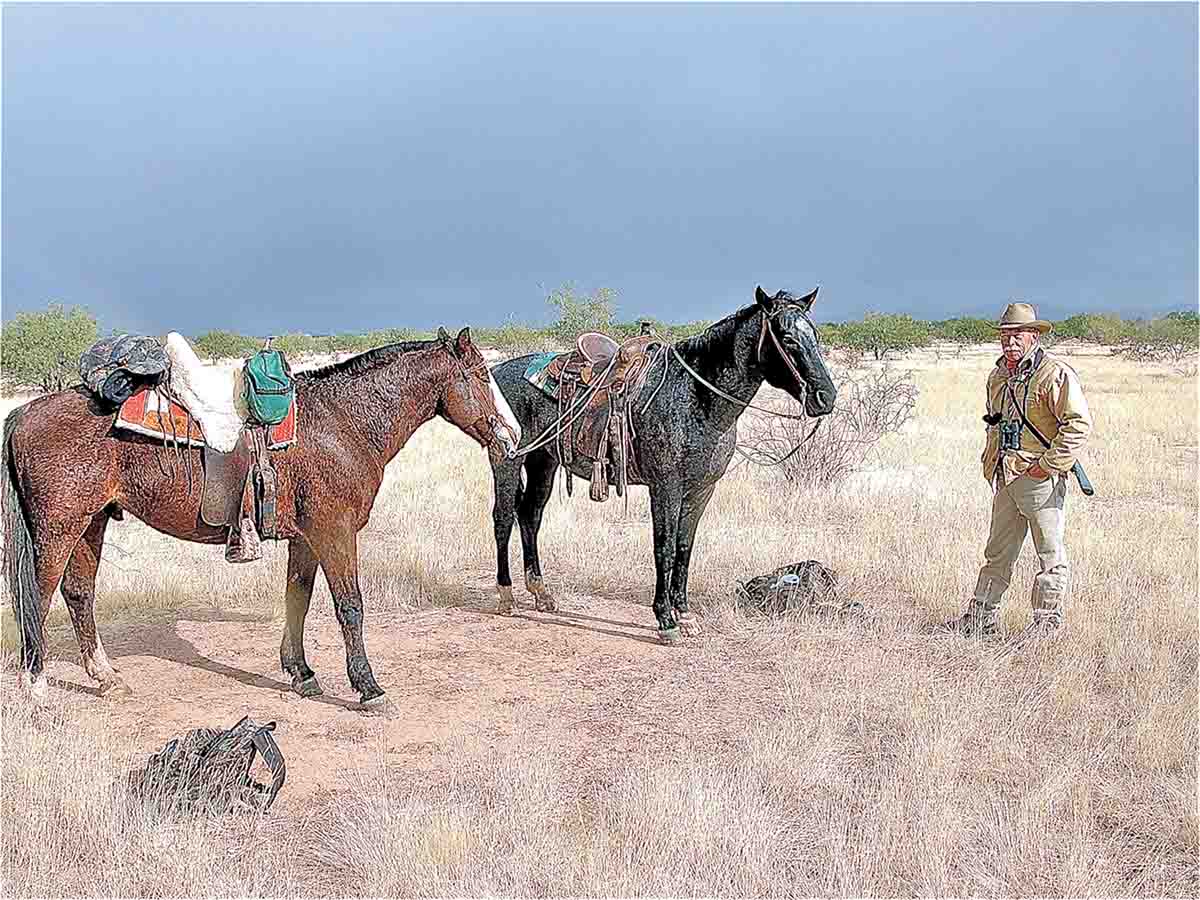
Fun Fact: During the post-World War II era when surplus military was among the more popular hunting jackets and scoped rifles were a rarity, hunter success was so high that states found it necessary to establish hunting seasons and regulations to prevent a total loss of deer species in some areas.


